the merest hint


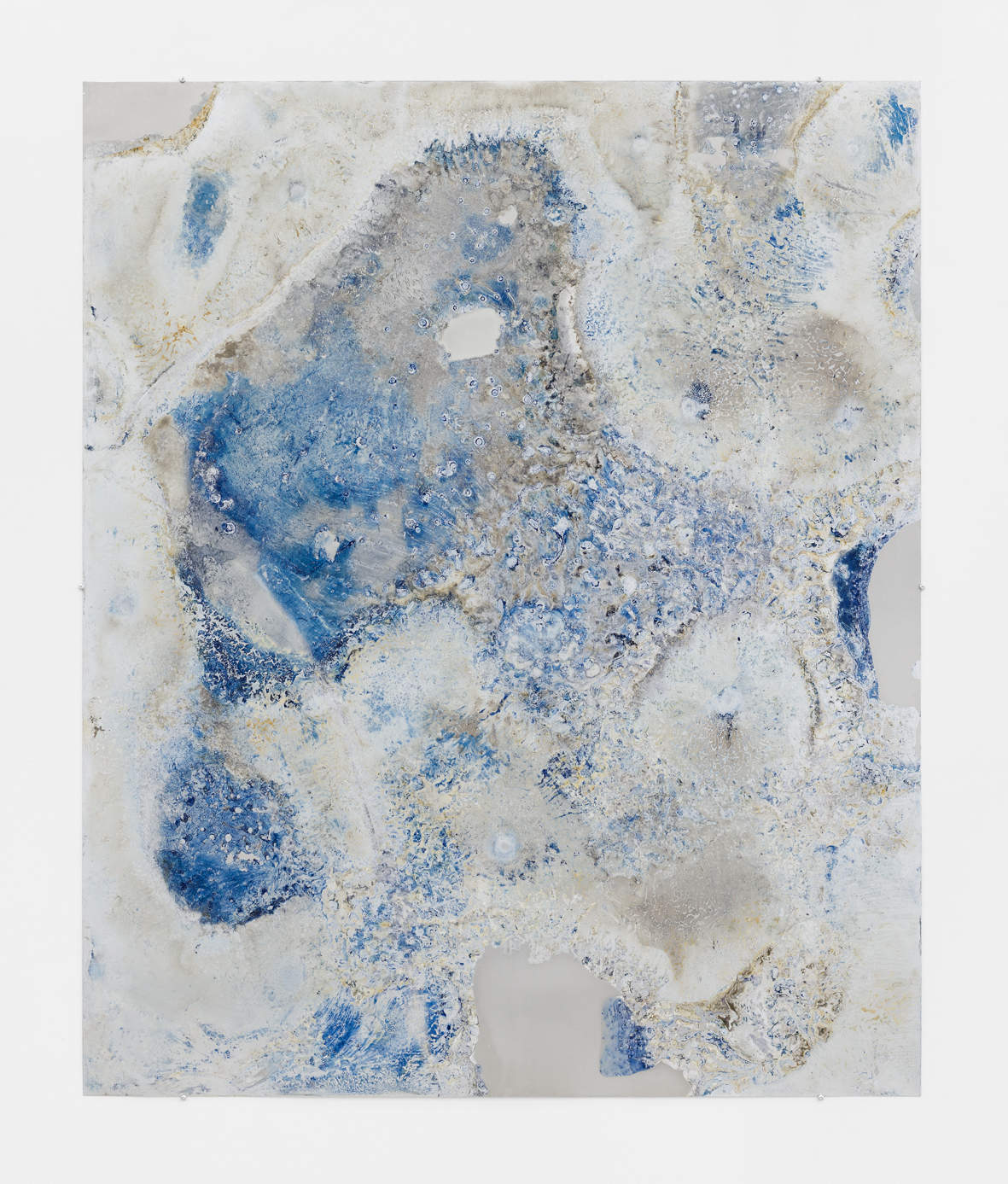
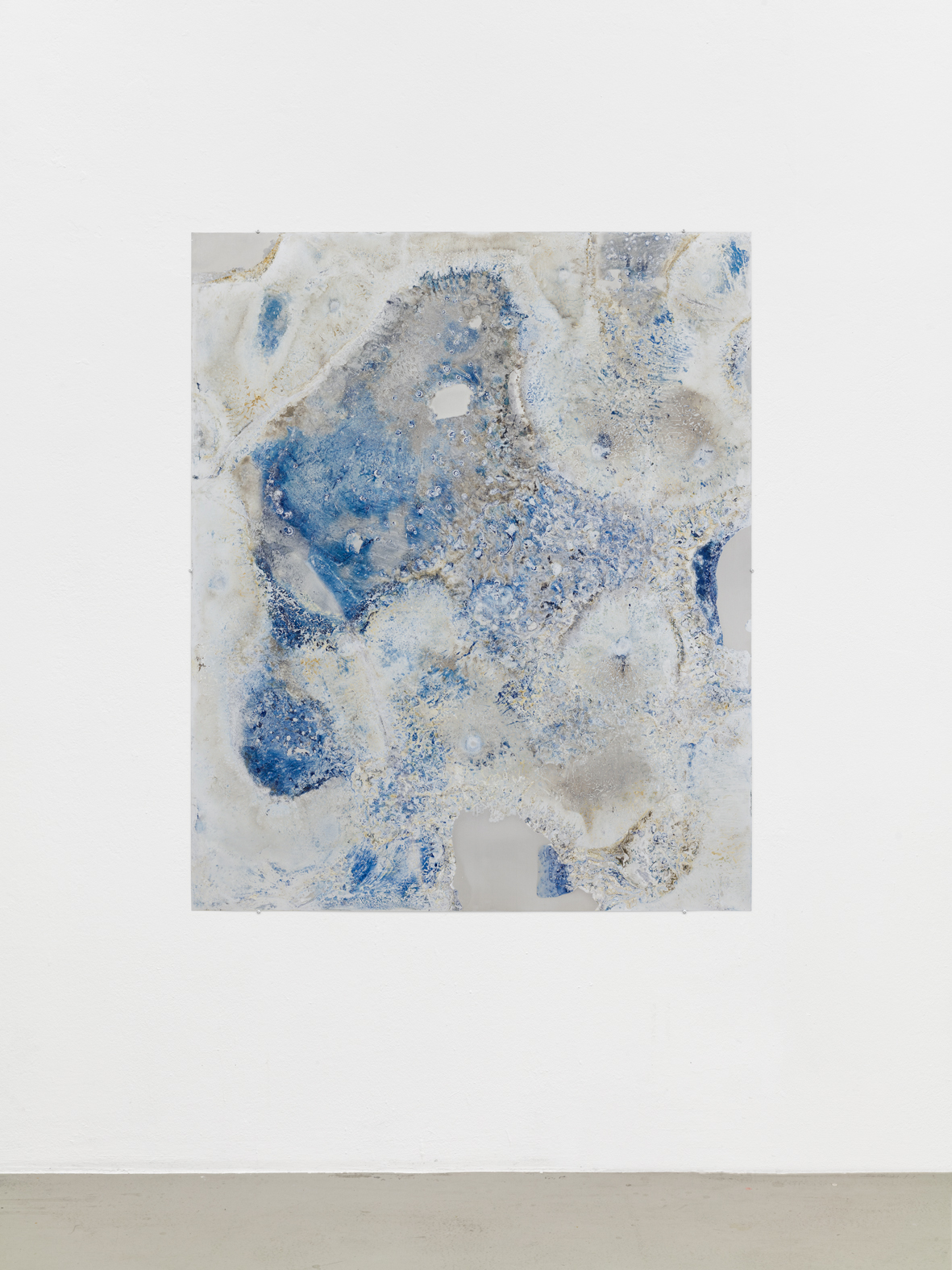
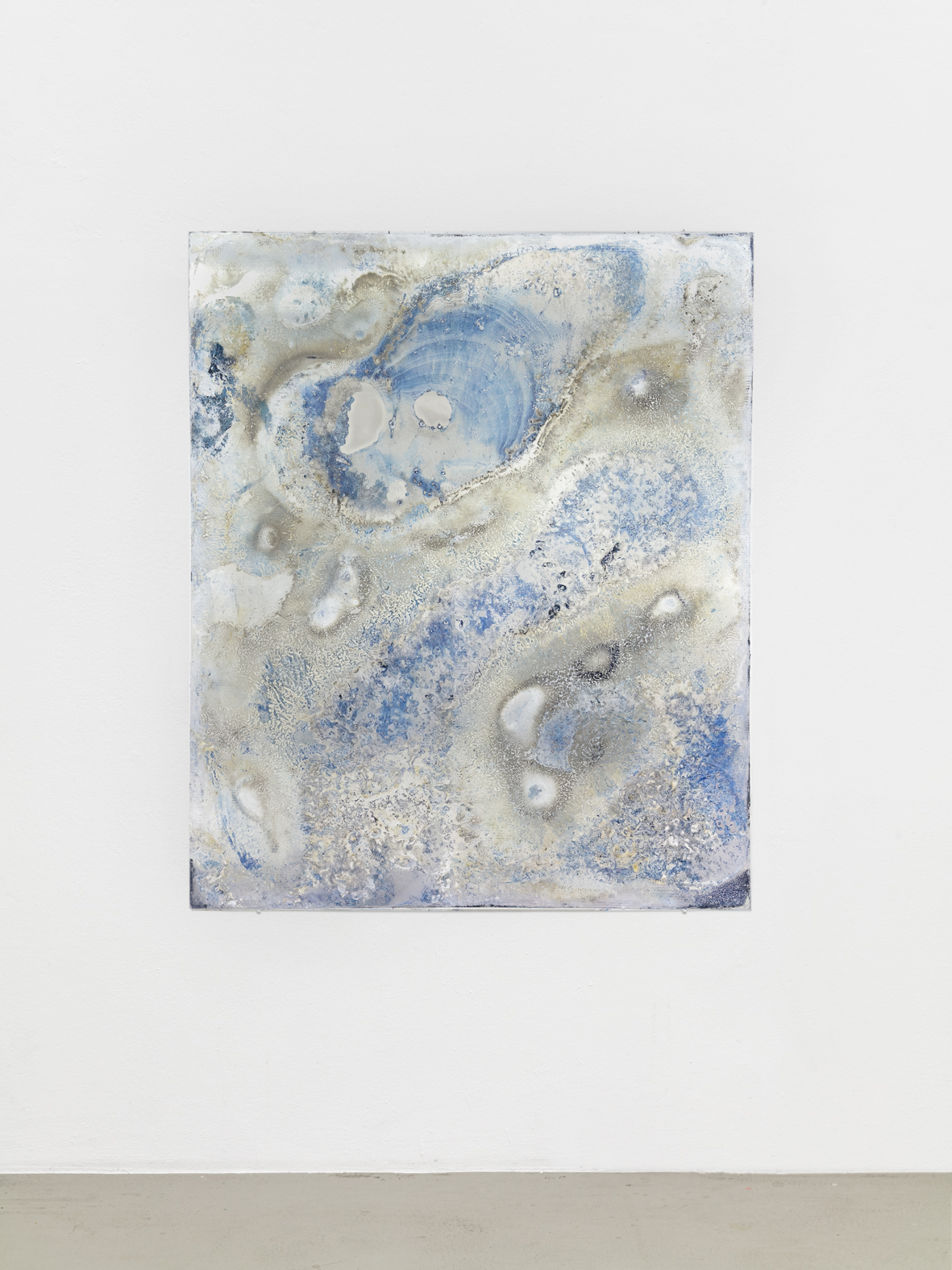
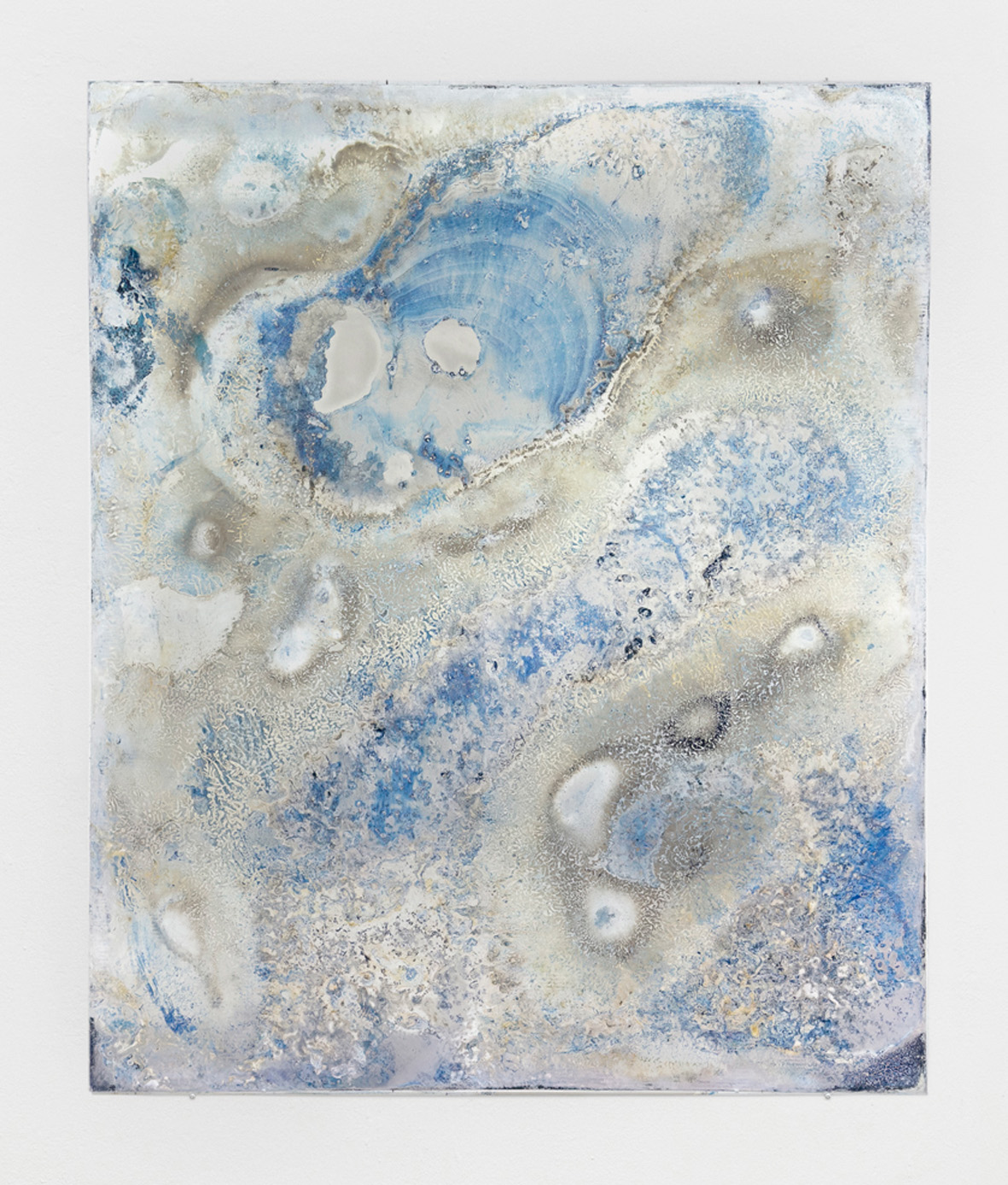
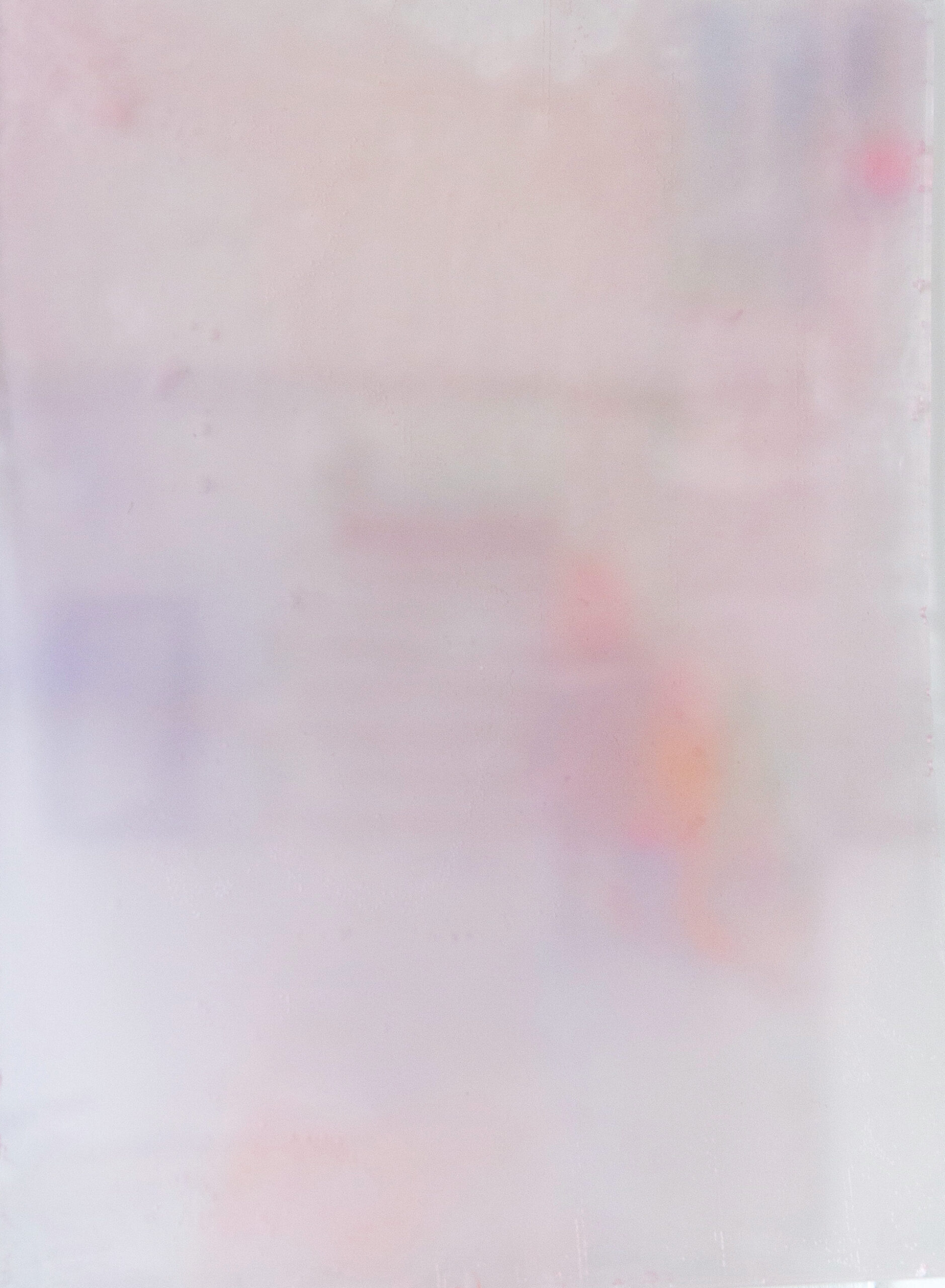
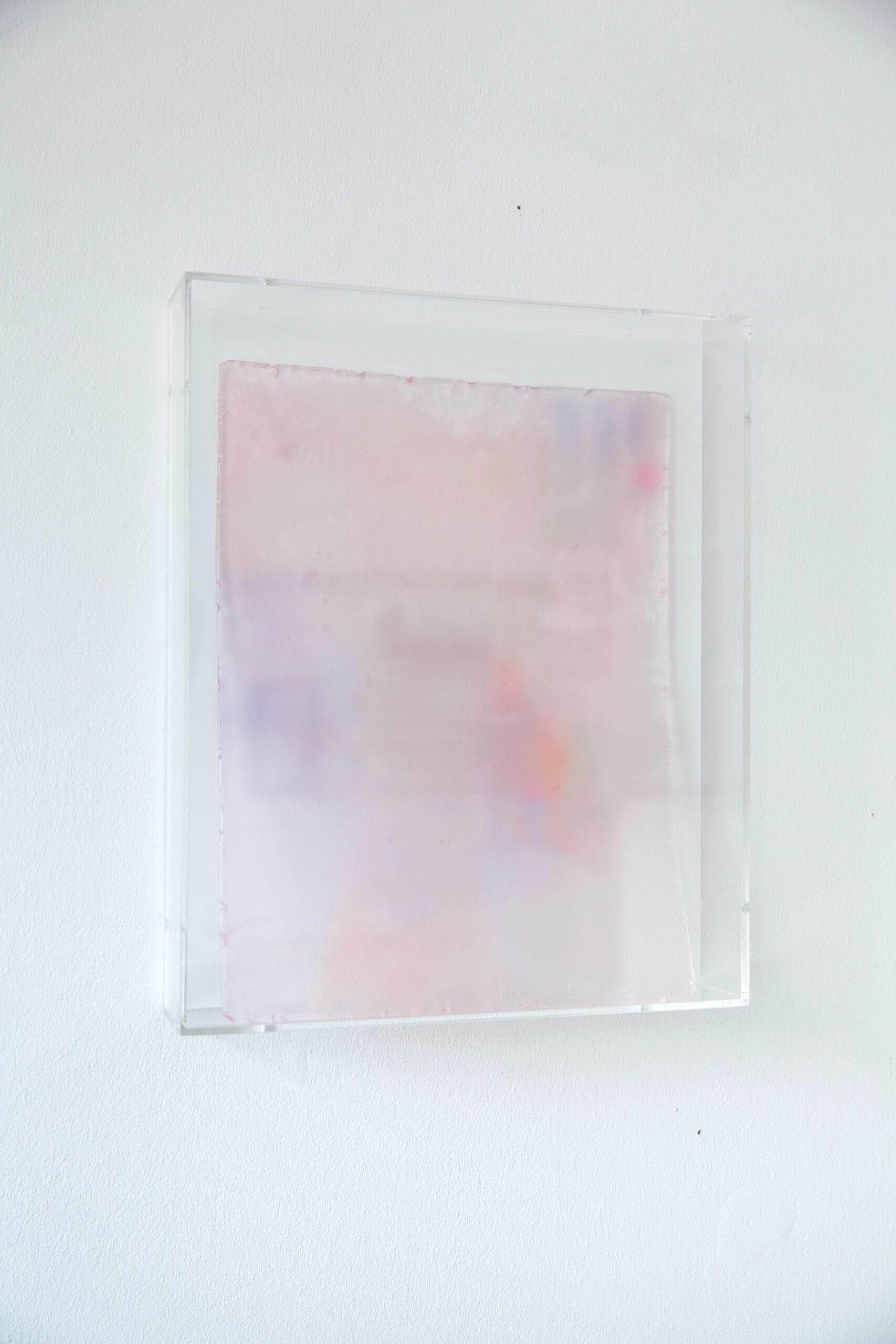
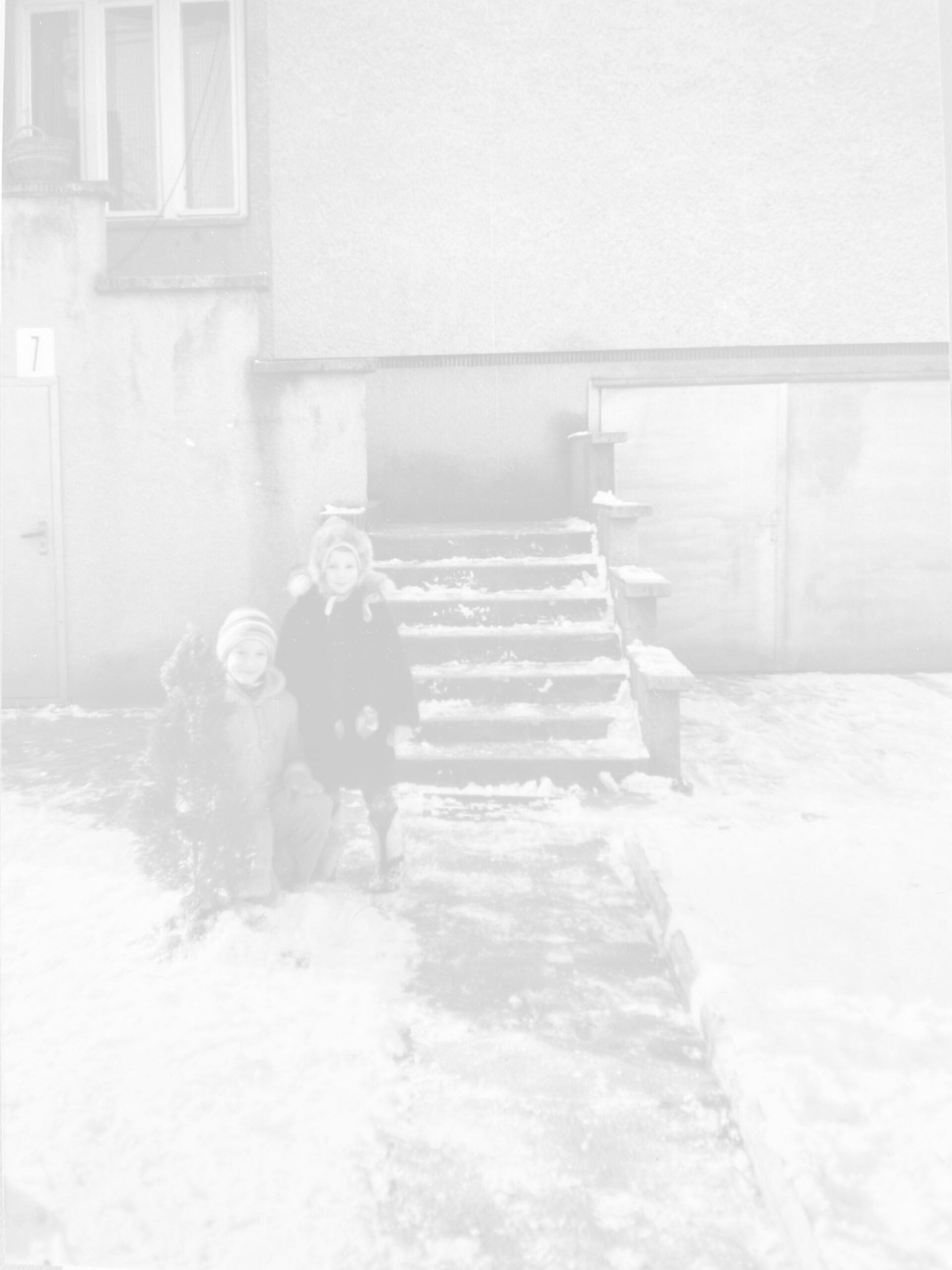
All of this works were shown at the group exhibition „the merest hint“ at Aura, Düsseldorf, June 2025
untitled (48.54 N, 22.99 E), 2024/25, was also shown as part of Jahresgaben at the Leopold Hoesch Museum, Düren, and is currently on view at the Kölnischer Kunstverein, Cologne, as part of Jahresgaben Unbill, until the end of 2026.
(German translation below.)
untitled (skin-divers) Aluminum, Rhine water, potassium ferricyanide, ammonium iron(III) citrate 142 × 172 cm, 3 pieces, 2023/25
Water and light are not only the foundation of all life on Earth, but they are also indispensable for human perception and form the material basis of photography.
To make the role of these two elements visible in the image-making process, the artist Olga Holzschuh works with cyanotype:
Potassium ferricyanide(III) and ammonium iron(III) citrate dissolved in water and processed into a light-sensitive emulsion.
The work untitled (skin-divers), 2023/25, is part of a series of works conceived as an open process, combining artistic research, performative material observation, and a process-based approach to image creation. It was originally created for the exhibition Vibrant Waters at the Temporary Gallery. For this, Olga Holzschuh applied the emulsion to three aluminum plates, which were then covered with glass. The water used for the emulsion was taken directly from the Rhine. In the exhibition space, the emulsion reacted under glass to UV light and room temperature.
Cyanotypes do not stop reacting and evolving. Therefore, the work can be understood as the trace of a three-year artistic process. Impressions, deposits, and discolorations have become integral components of the image.
untitled (48.54 N, 22.99 E), 2024/25
Glycerin soap, transfer print (photography), Plexiglas
32 × 26 cm, framed: 39 × 32 × 6.5 cm
In her work untitled (48.54 N, 22.99 E), the artist traces her own biographical paths. Protected by a Plexiglas cover, it shows the imprint of a photograph created using the transfer print method developed by the artist on glycerin soap. Like a transparent layer of skin, the material contains the image of her childhood home in the Transcarpathian region, now part of Ukraine.
Unfixed and ephemeral, since it is “washable,” the pigment layer lifted from the photograph lies on the surface of the material—unprotected and exposed. Upon closer inspection, the motif shows the artist herself as a five-year-old with her older sister in front of the mentioned house.
This fading memory image, caught in an attempt to hold onto it, speaks not only of the past but also of complex, “elusive” diasporic family histories*, shaped by multiple political upheavals and shifting territorial affiliations of this place.
What remains are questions of (dis)location, of one’s own (national) identity, and of what remains when the childhood home is far away, on uncertain ground—a reflection that manifests here through the engagement with medium and material in the transfer.
*The artist herself comes from a Hungarian-German minority and was born in this location in the Transcarpathian region.
1-6:
ohne Titel (skin-divers)
Aluminium, Rheinwasser, Kaliumhexacyanidoferrat, Ammoniumeisen(III)-citrat
142 × 172 cm, 3-teilig, 2023/25
Wasser und Licht sind nicht nur die Grundlage allen Lebens auf der Erde, sie sind auch unentbehrlich für das menschliche Wahrnehmungsvermögen und bilden die materiellen Grundlagen der Fotografie.
Um die Rolle dieser beiden Elemente im Bildprozess sichtbar zu machen, arbeitet die Künstlerin Olga Holzschuh mit Cyanotypie:
Kaliumhexacyanoferrat(III) und Ammoniumeisen(III)-citrat in Wasser gelöst und zu einer lichtempfindlichen Emulsion verarbeitet.
Die Arbeit untitled (skin-divers), 2023/25, ist Teil eines Werkzyklus, der sich als offener Prozess versteht und künstlerische Forschung, performative Materialbeobachtung und prozesshafte Bildfindung miteinander verbindet. Ursprünglich entstand sie im Rahmen der Ausstellung Vibrant Waters in der Temporary Gallery. Dafür trug Olga Holzschuh die Emulsion auf drei Aluminiumplatten, die wiederum mit Glas bedeckt waren, auf. Das für die Emulsion verwendete Wasser entnahm sie direkt dem Rhein. Im Ausstellungsraum reagierte die Emulsion auf, sowie unter Glas mit UV-Licht und Raumtemperatur.
Cyanotypien hören nicht auf zu reagieren und sich weiter zu entwickeln. Daher kann man die Arbeit als Spur eines dreijährigen künstlerischen Prozesses verstehen. Druckstellen, Ablagerungen und Verfärbungen sind zu integralen Bestandteilen des Bildes geworden.
7:
o.T. (48.54 N, 22.99 E), 2024/25
Glycerinseife, Transferdruck (Fotografie), Plexiglas
32 × 26 cm, gerahmt: 39 × 32 × 6,5 cm, Gewicht ca. 500 g
Anbringung: stehend auf einem Vorsprung o.Ä., mit einem Hacken an der Wand
In ihrer Arbeit o.T (48.54 N, 22.99 E) geht die Künstlerin ihren eigenen biografischen Spuren nach. Geschützt durch eine Plexiglashaube, zeigt sie den Abdruck einer Fotografie, die mit dem von der Künstlerin entwickelten Transferprint-Verfahren auf Glycerinseife hergestellt wurde. Wie transparenten Hautschicht birgt das Material die Abbildung des Hauses ihrer Kindheit in der Region Transkarpatien, die in der heutigen Ukraine liegt.
Nicht fixiert, flüchtig, da „abwaschbar“ liegt von der Fotografie abgezogene Pigmentschicht auf der Oberfläche des Materials – ungeschützt und offen – dar. Bei näherer Betrachtung zeigt das Motiv die Künstlerin selbst als Fünfjährige mit ihrer älteren Schwester vor dem besagten Haus.
Das verblassendes Erinnerungsbild, im Versuch des Festhaltens begriffen, spricht nicht nur vom Vergangenem, sondern auch von komplexen, „ungreifbaren“ diasporischen Familiengeschichten*, die von mehrfachen politischen Umbrüchen und wechselnden territorialen Staatszugehörigkeiten dieses Ortes geprägt sind.
Was bleibt sind Fragen der (Nicht-)Verortung, nach der eigenen (nationalen) Identität und danach, was bleibt, wenn das Haus der Kindheit weit weg ist, auf derzeit unsicherem Boden steht, die sich hier in der Auseinandersetzung mit dem Medium und Material im Transfer äußern.
*Die Künstlerin selbst stammt aus einer ungarndeutschen Minderheit, und wurde an diesem Ort in der Region Transkarpatien, geboren.